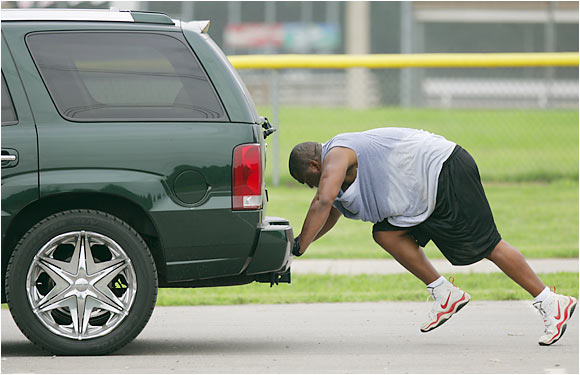[…] days per week and at least 2-3 of those days need to be a form of “intense” training. Intense is a subjective thing. What is tough for one person is a walk in the park for another. So, the easiest way to know if […]
- You are here:
- Home »
- Blog »
- Fitness After 40 »
- How to Train Like The Pros to Slow Aging
How to Train Like The Pros to Slow Aging
The kind of exercise you need as you age is generally just the opposite of what most people actually do.
Aging is generally associated with slowing down – walking, maybe some easy running, maybe some light weight lifting. And the US Government hasn’t helped matters by mixing up the terms “exercise” and “physical activity”.
If you want to age well, you have to take a different approach.

“Try going for a 10-minute brisk walk, 3 times a day, 5 days a week. This will give you a total of 150 minutes of moderate-intensity activity.”– Center for Disease Control.
Sorry. A ten minute stroll around the block is not going to cut it. Maybe for some people, walking briskly is intense. But if so, and you continue to do it, before long, you won’t even be out of breath.
Not all exercise is the same.
So what am I suggesting? Flip 400 lb tractor tires down the street? Or, load up a P90X dvd and go for it?
Not quite, although some day perhaps….
No, what you need is intense training that is geared to your level of ability.
For some, walking may be intense. For others, it’s sprinting.
The key to helping your body adapt positively to the aging process is to continue to push it outside your comfort zone for brief periods of time, rest, and repeat.
And here’s the the thing you need to watch. Heart rate.
How to Train Like the Pros
When I worked with pro athletes, one of the things we used a lot was a heart rate monitor. Why? Because you want an athlete to push hard (and many will push themselves to the point of puking if you don’t watch closely) but not too hard.
- You’ll need a heart rate monitor. I use the Wahoo Fitness with the iPhone app.
- Go here to find your ideal heart rate (HR) training zones. Plug in the info and look under the Inbar column (you’ll need to know your heart rate when you wake up in the morning before you get out of bed).
- Jot down the numbers for 70% and 85%.
- To get started, choose two days per week (and put two or three days in between) using any of the following: a bike, treadmill, elliptical, walk-run, rowing machine (if you really know how to use it that is), stair climber (or climb stairs).
- Start with a moderate effort and after one minute note your HR. If it’s less than 80%, time to crank it up.
- Increase your effort until your HR hits the 80-85% range. Now keep it there for at least 30 seconds then ease up until the HR comes back down to 70%. Note how long it takes for your HR to get back down to the 70% number.
- Once you’ve hit 70%, time to take it back up to 80-85%.
- Continue this pattern for ten minutes working your way up to twenty.
This is not easy. If getting fit were easy, then we would all be fit.
And if you’ve never exercised, get cleared by your family doctor first.
Keep in mind that intensity is unique to the individual. That’s why you need the HR monitor for this type of training.
The reason for the HR monitor is you will get more fit over time and be able to do more work at lower heart rates and without knowing the data, you won’t know how hard to push.
When I first started down this path, a 30 second slow run (fellow Tribester Ken likes to remind me to toss out the word “jog” along with “workout” and “cardio”) shot my HR to 80% in a nano second and it kept climbing. Then I had to walk about three minutes for it to come back down. I wasn’t in the best condition. Now, I can do a lot of stuff – run, jump, all sorts of routines, and my HR will jump up into the zone, I can keep it there for quite a while, and I recover quickly.
And my resting heart rate in the morning? Usually the low 50’s. Occasionally lower than that – like 46 to 48 BPM. Sitting in a chair watching TV – 60 to 65 BPM.
That’s what training can do for you.
And if I can do it, you can do it too.
But you have to start slow, pay attention to your effort, how you feel, monitor the data, and don’t quit on your self.
What kind of training are you using to slow the aging train?
